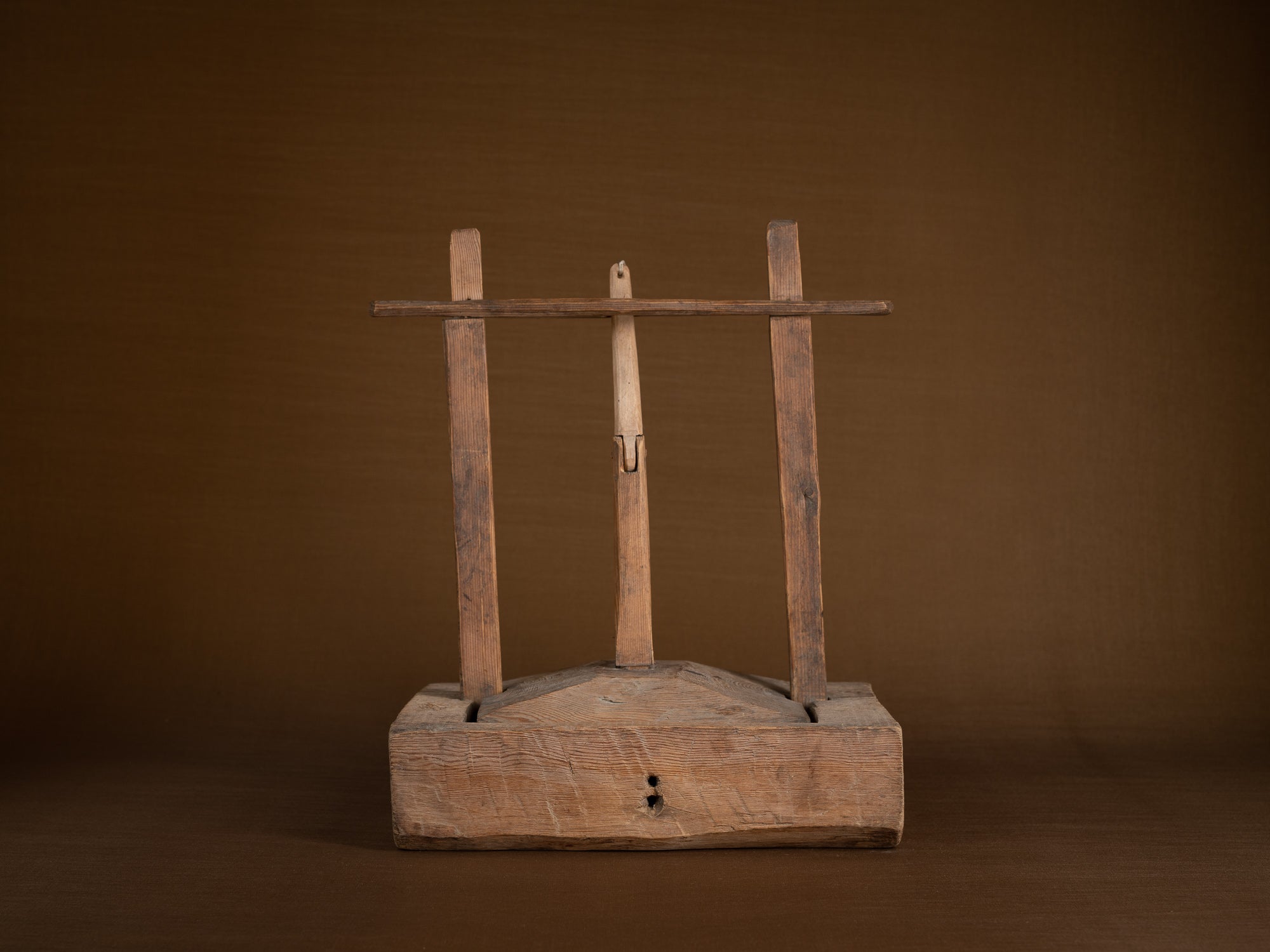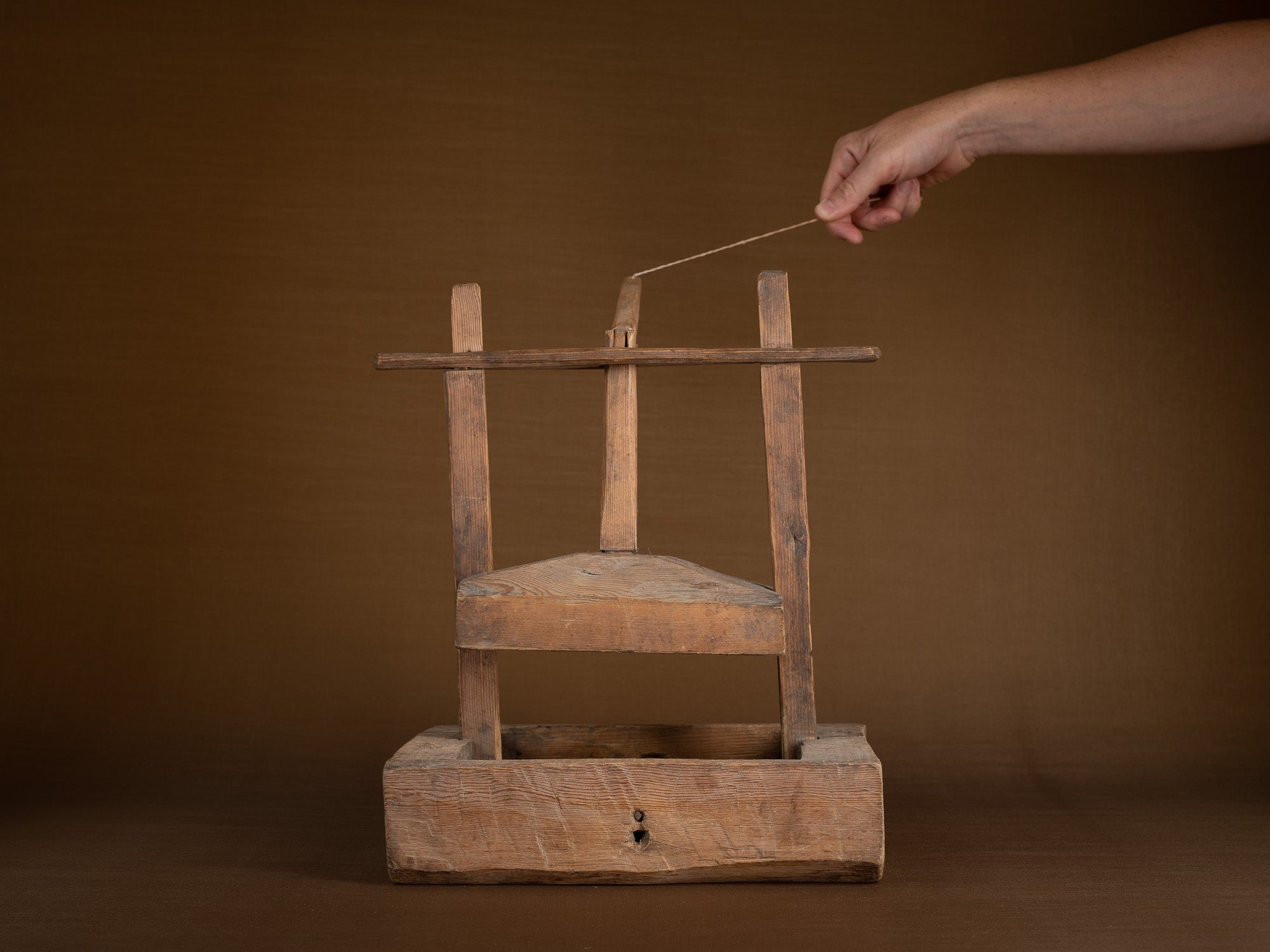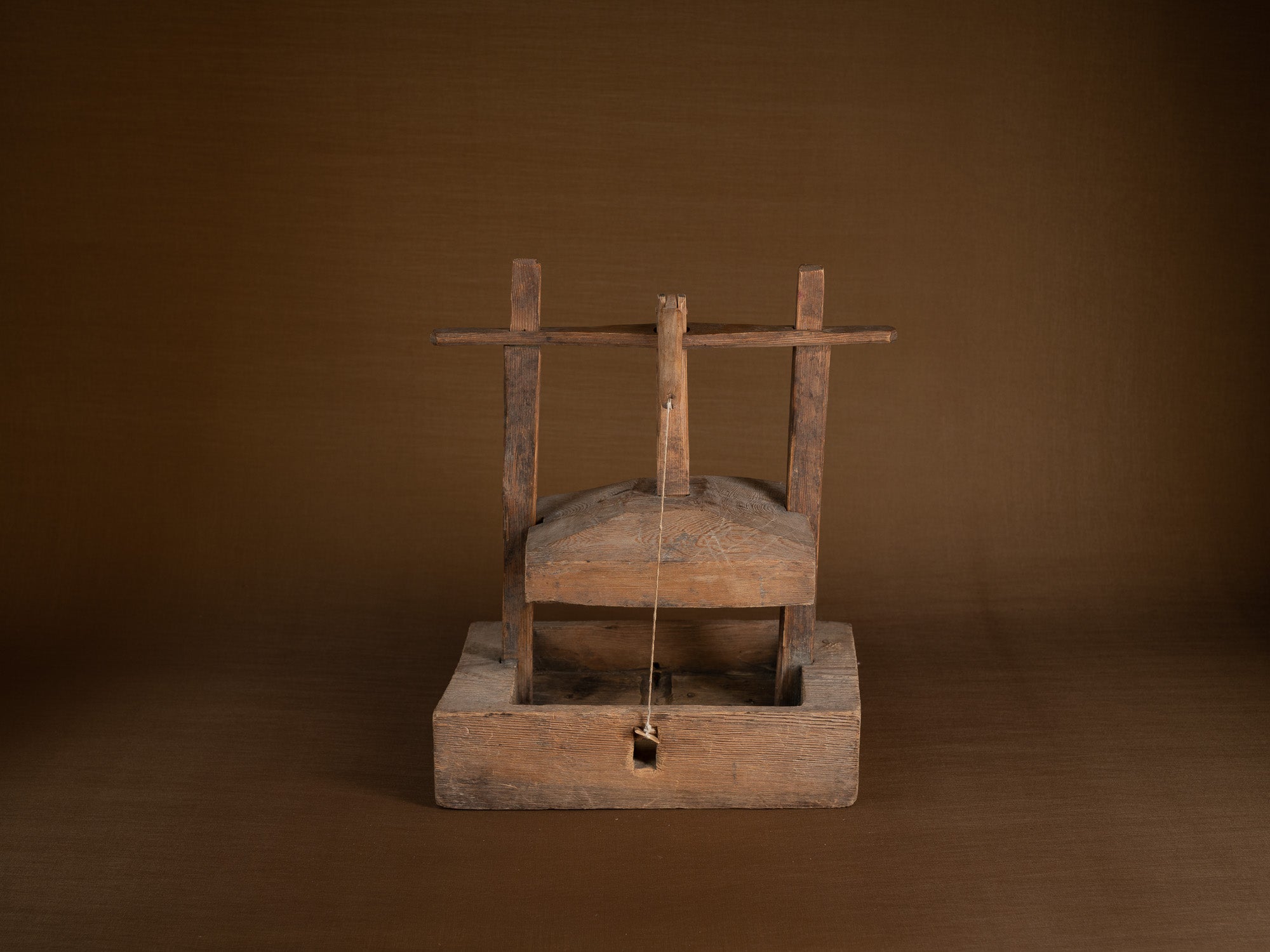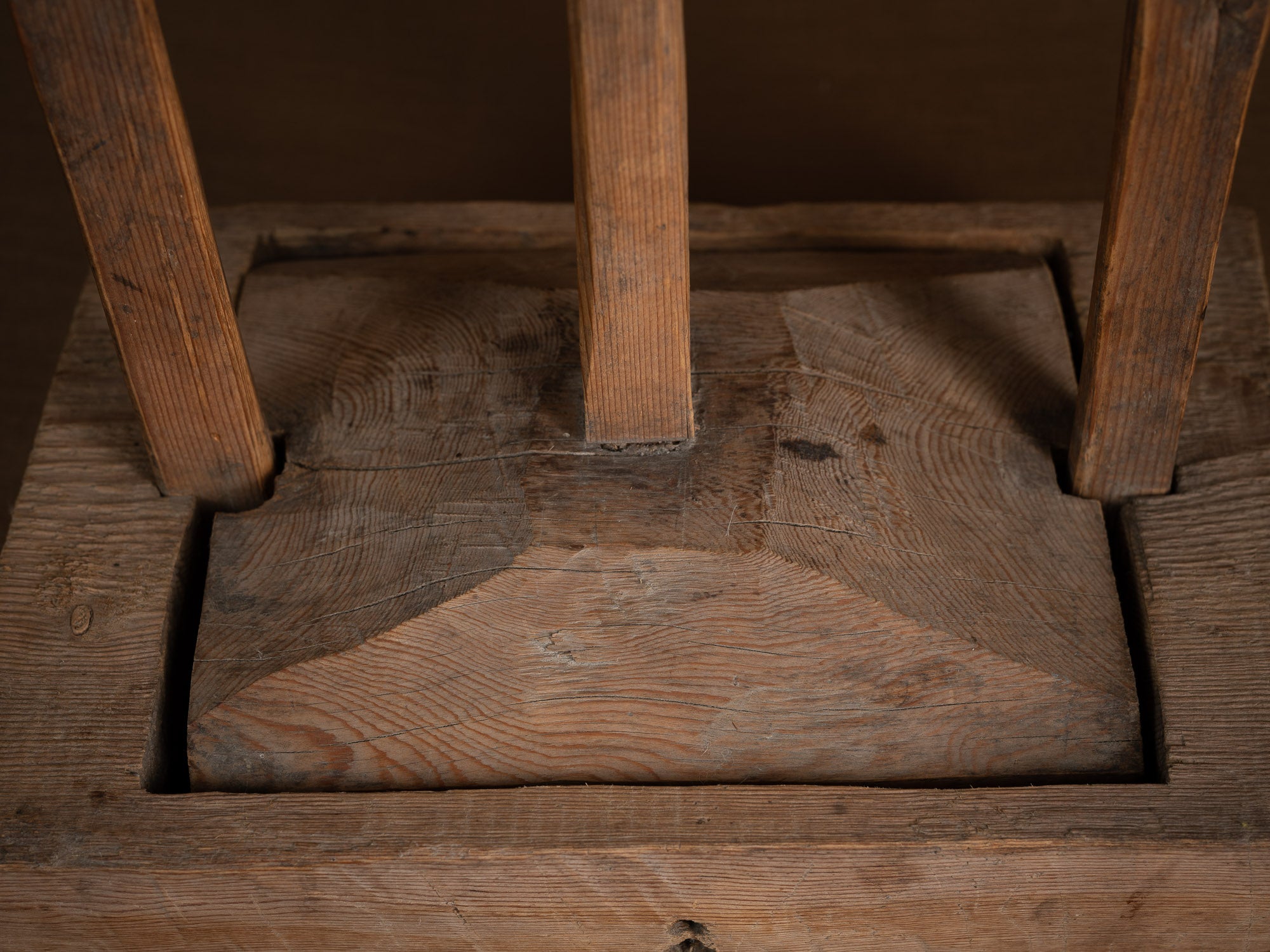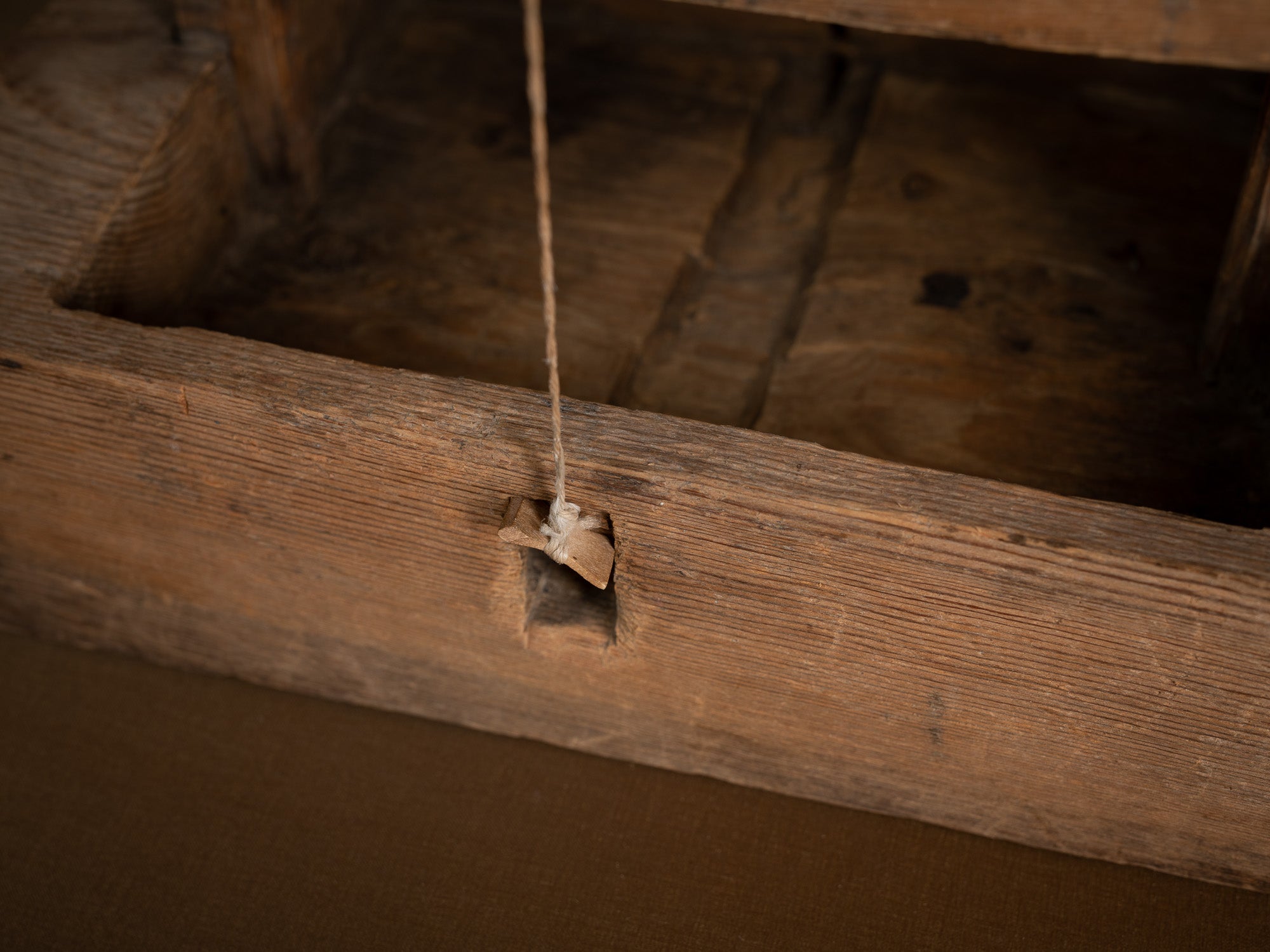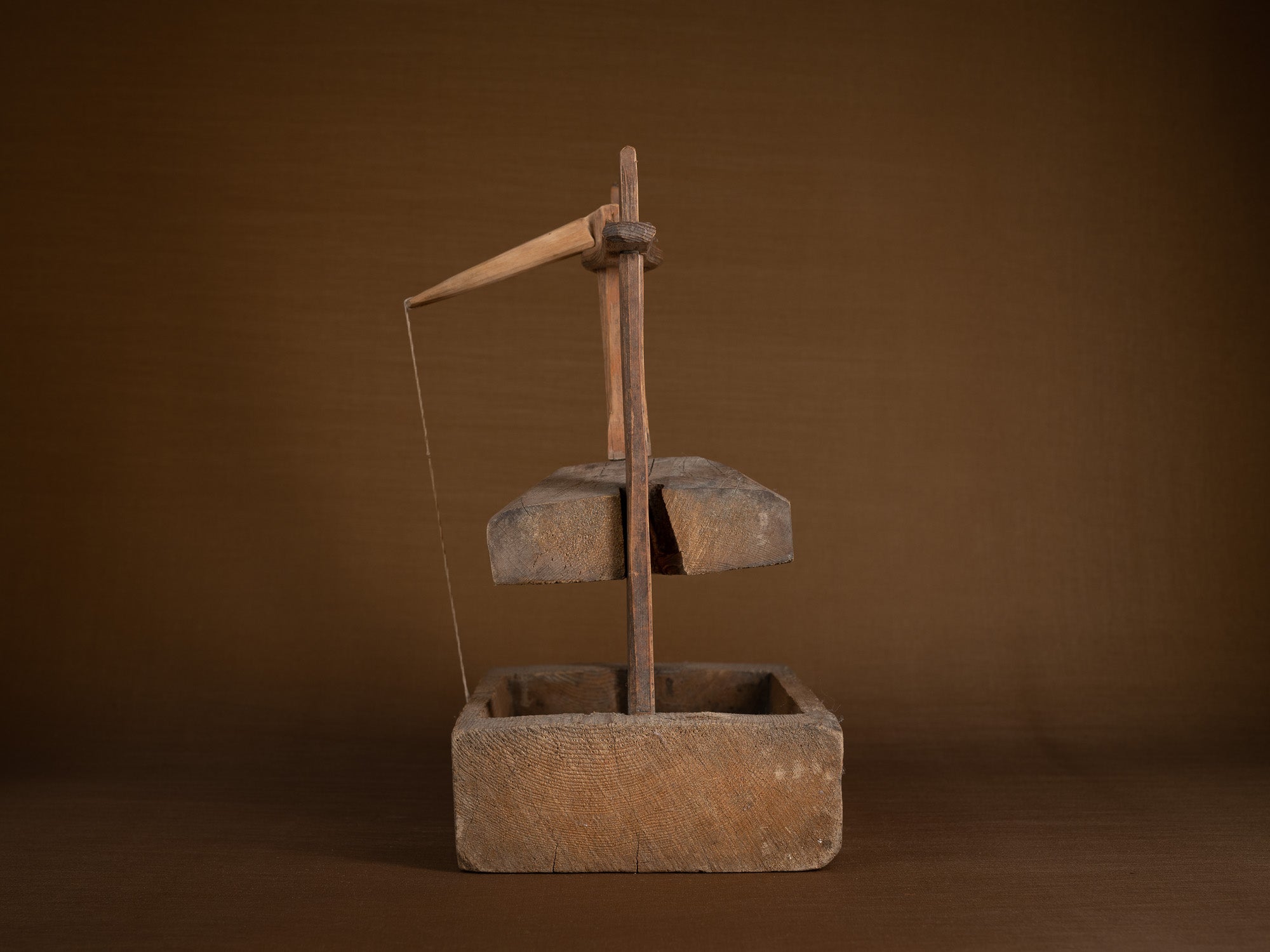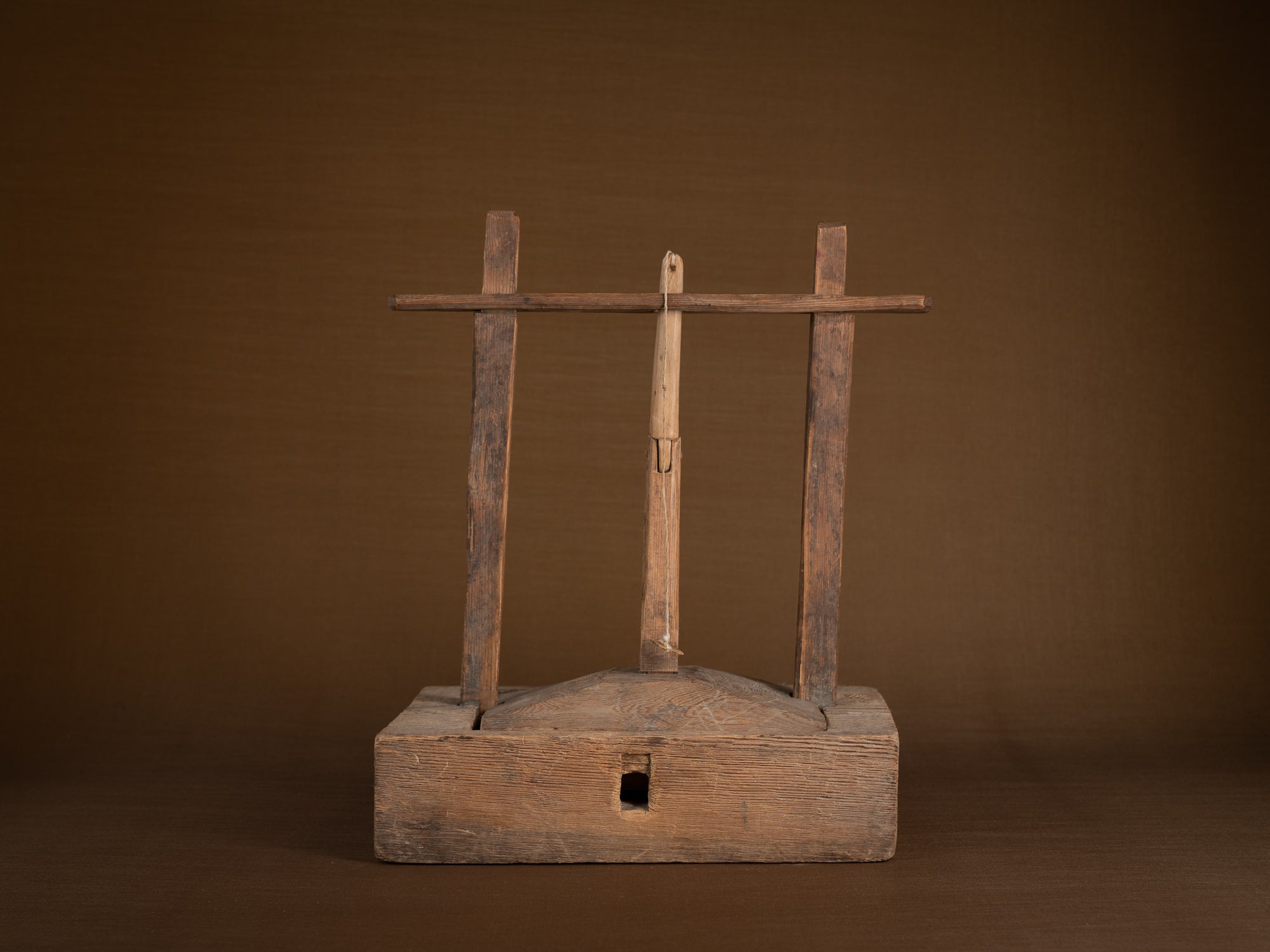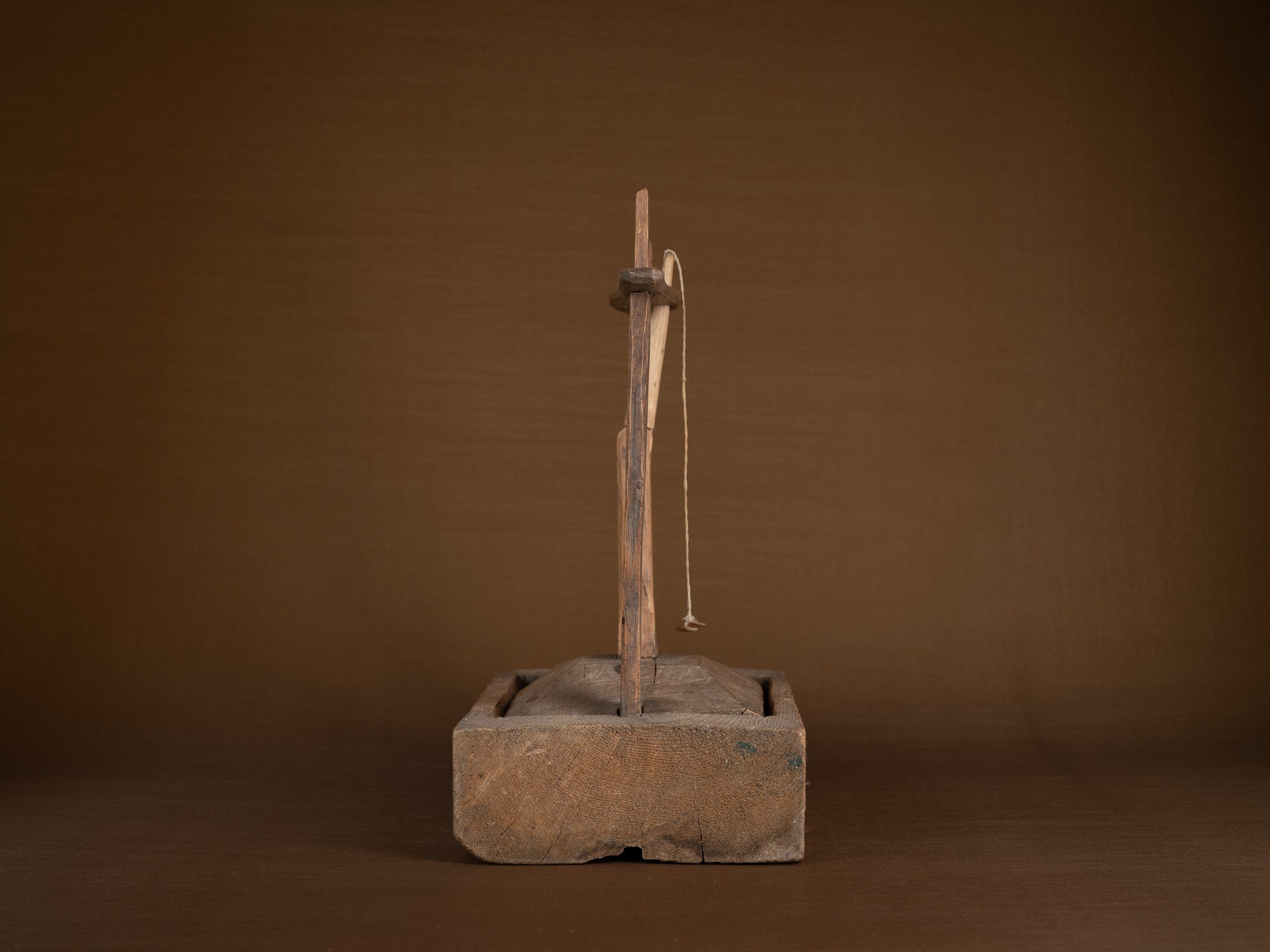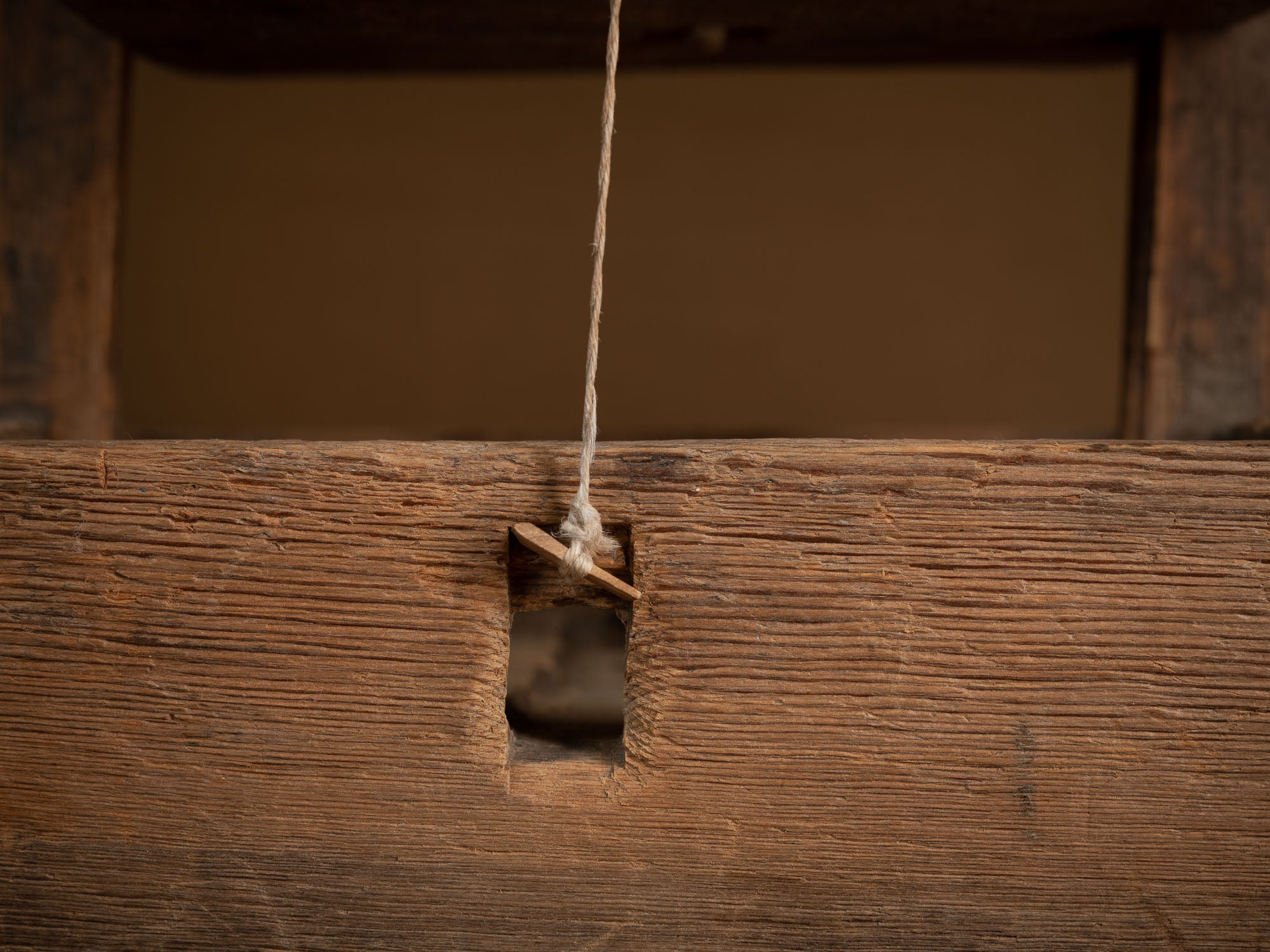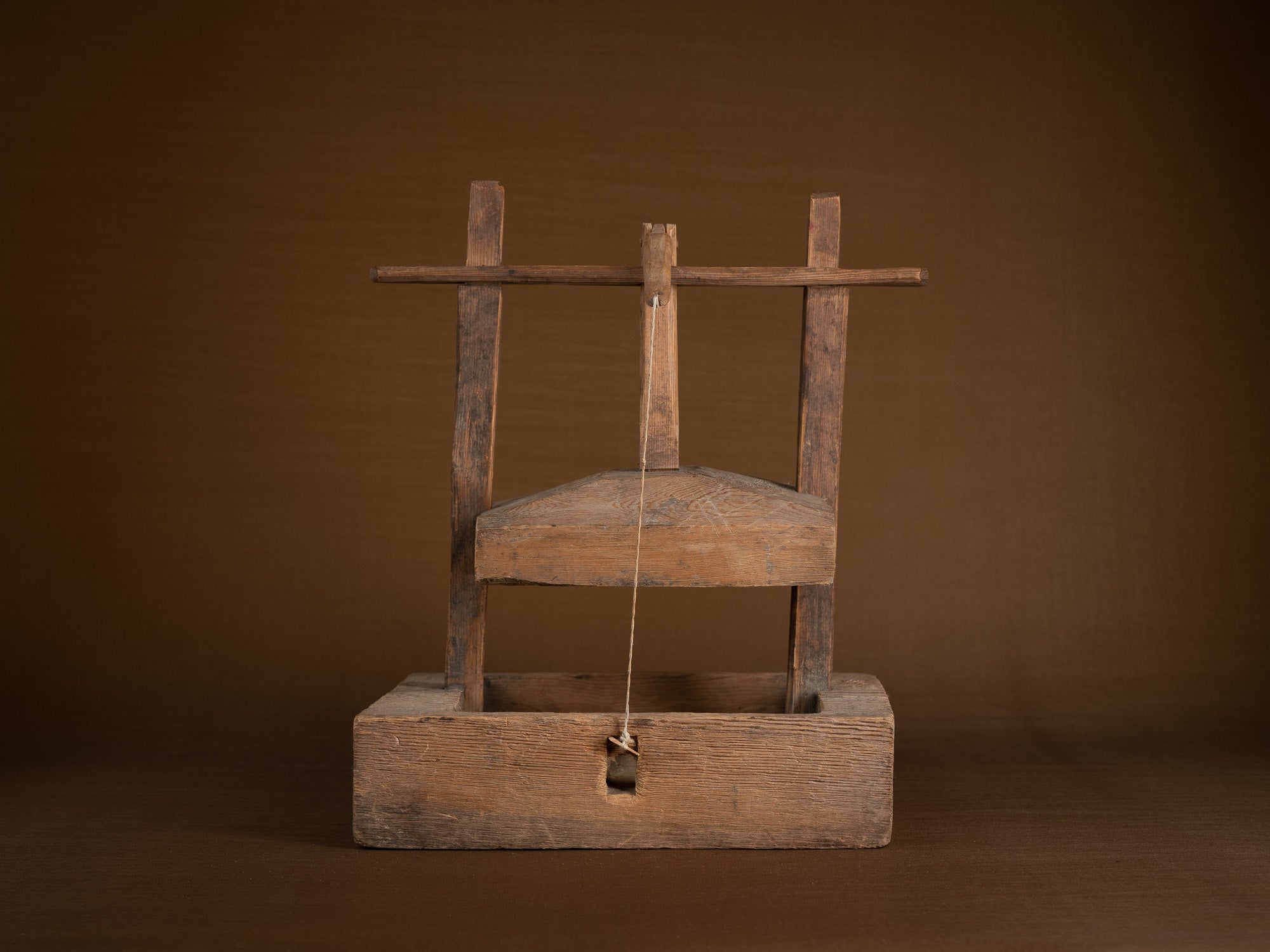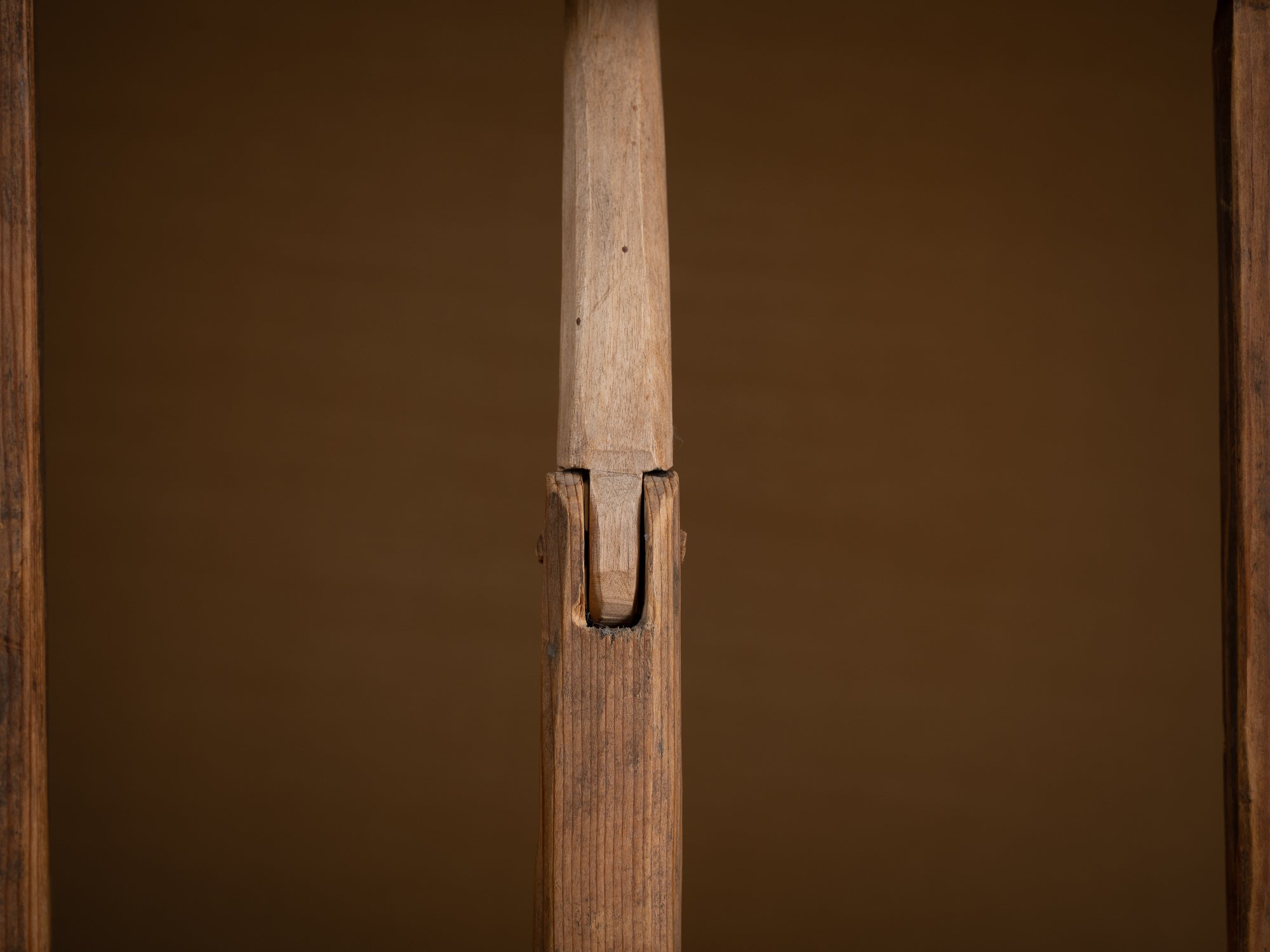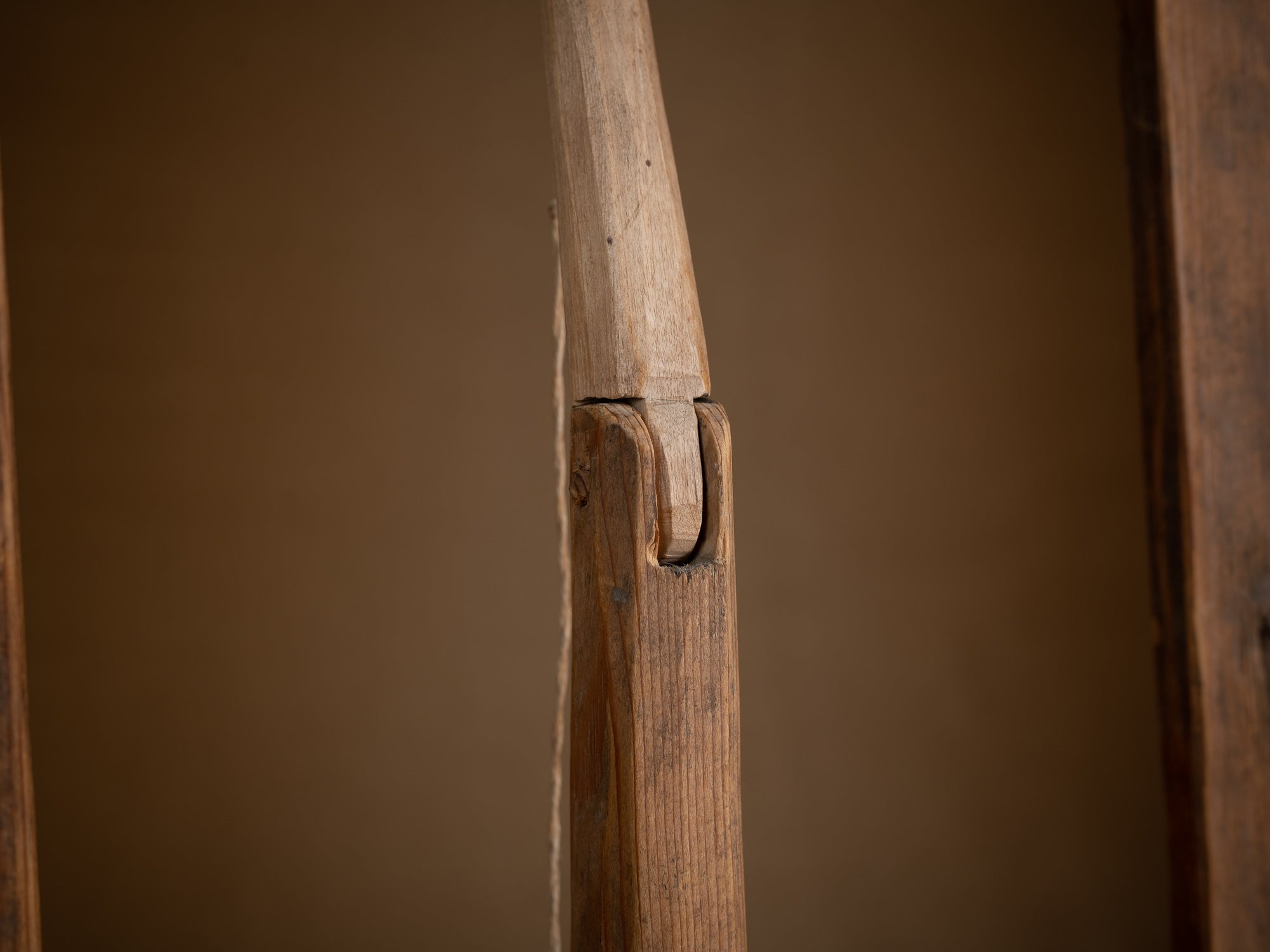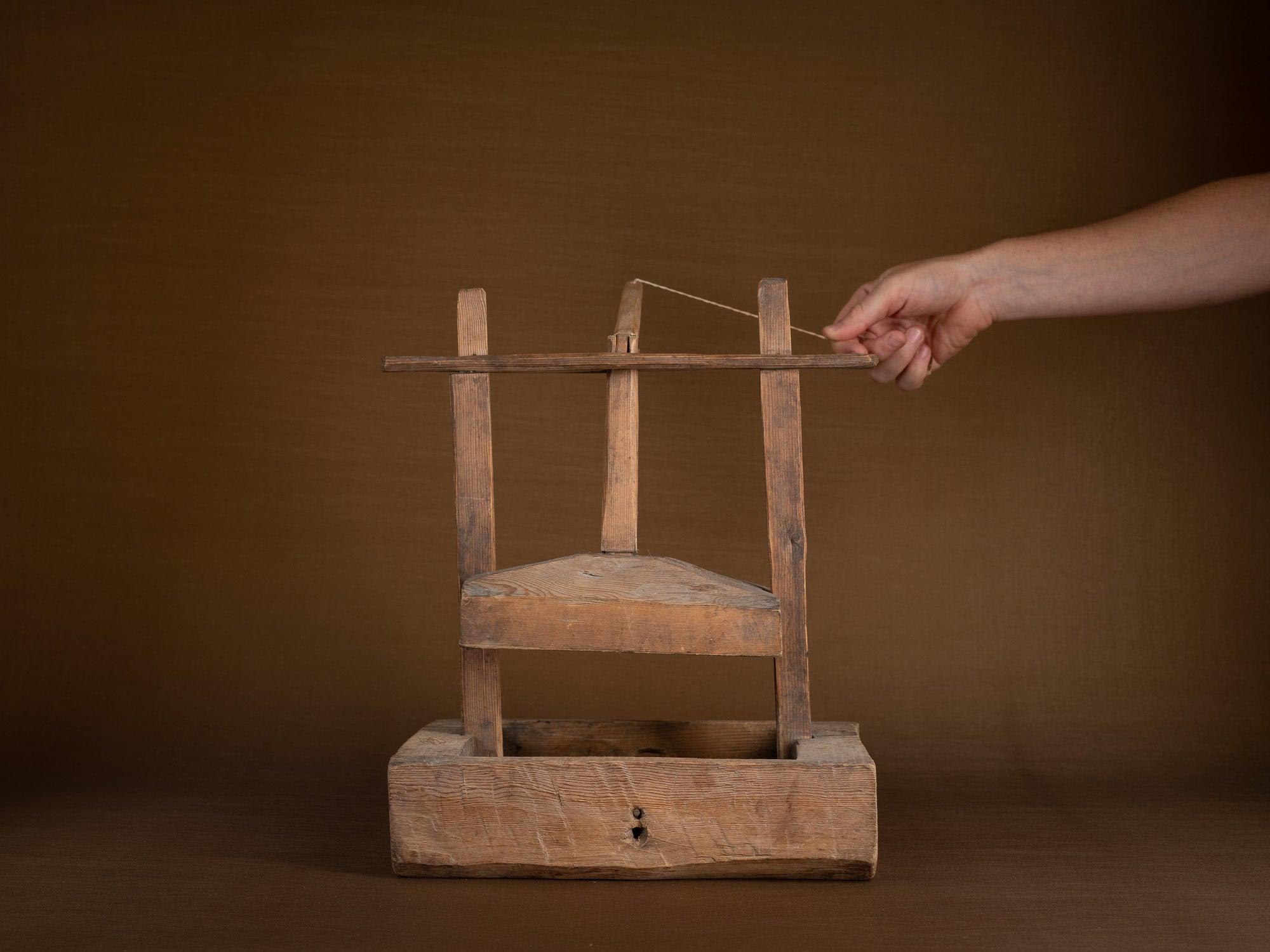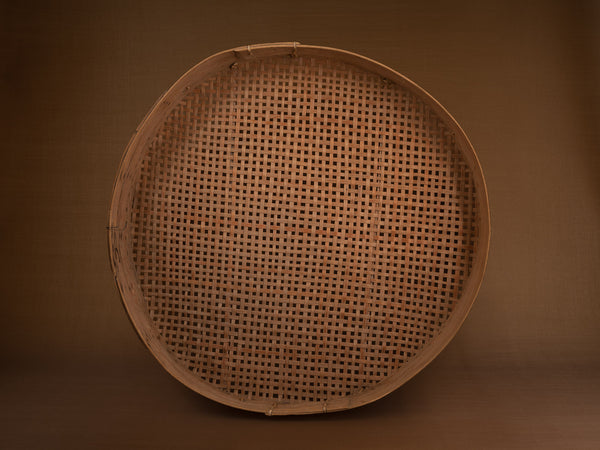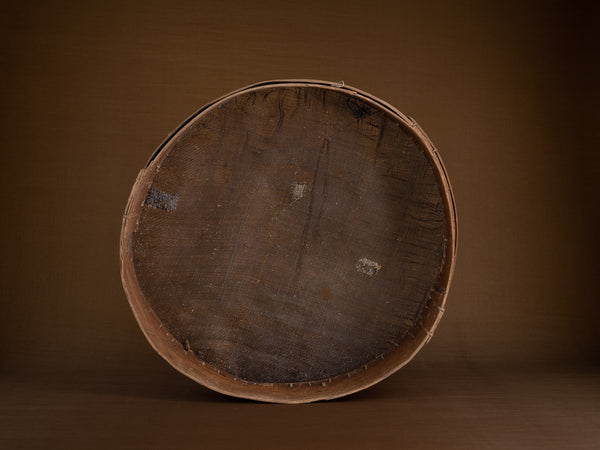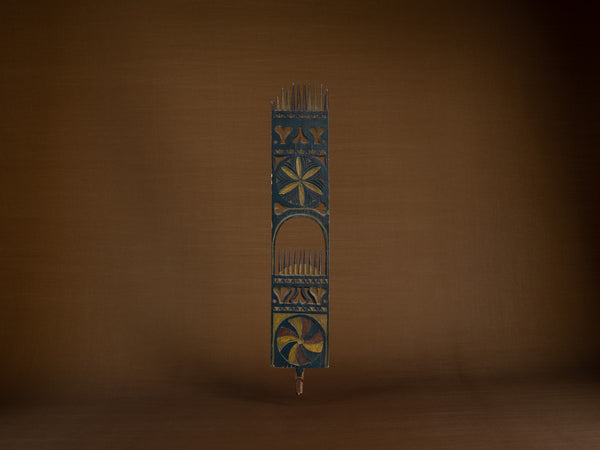
Rare piège à souris, Suède (Fin du XVIIIe / début du XIXe siècle)..Rare mousetrap, Sweden (late 18th / early 19th century)
Vendu..Sold out
....
Chef-d'œuvre ordinaire de l'art populaire
Ancien travail paysan
Piège à rat
Superbe travail de mécanique en menuiserie
Sublime patine
Jämtland, Suède
Fin du XVIIIe / début du XIXe siècle
Mitate mono ou sculpture fortuite à poser: Un Mitate mono désigne une forme de métaphore, utilisée dans la culture japonaise traditionnelle. Le terme, qui veut dire littéralement « instituer (tate) par le regard (mi) », acte le déplacement d'un usage et d'une fonction par l'élection d'une chose à une nouvelle place. C'est l'idée de porter un regard nouveau et différent sur une chose connue.
Cette œuvre est un témoignage rare du savoir-faire paysan qui s'exerçait partout sur la planète jusqu'à l'imposition du modèle industriel occidental.
Se rendre sensible à cette beauté simple, c’est peut-être déjà choisir son camp: celui de la vérité des matériaux, de l'indifférence aux hiérarchies de l'art académique, le camp de ceux qui saisissent la beauté où elle est, comme l'outil d'un rapport au monde.
Bibliographie
Modèles similaires conservés dans les collections du Nordiska Museet de Stockholm
This piece is presented as part of the exhibition: The poetry of earth is never dead, Swedish peasant art, the booklet of this show can be found here.
Dimensions
H 40 x L 34 x P 21 cm
Condition
Excellent état - patine, usures et tâches
..
Ordinary masterpiece of folk art
Old peasant work
Rat trap
Superb work of mechanics in carpentry
Sublime patina
Jämtland, Sweden
Late 18th / early 19th century
Mitate or chance sculpture to pose: A Mitate mono refers to a form of metaphor applied on things, used in traditional Japanese culture. The term, which literally means “to institute (tate) by the gaze (mi)”, records the displacement of a use and a function by the election of a thing to a new place. It's the idea of taking a new and different look at something known.
This work is a rare testimony to the peasant know-how that was practiced everywhere on the planet until the imposition of the Western industrial model.
Becoming sensitive to this simple beauty is perhaps already choosing one's camp: that of the truth of materials, of indifference to the hierarchies of academic art, the camp of those who grasp beauty where it is, as the tool of a relationship to the world.
Bibliography
Similar model is preserved in the collections of the Stocholm Nordiska Museet
This piece is presented as part of the exhibition: The poetry of earth is never dead, Swedish peasant art, the booklet of this show can be found here.
Dimensions
H 40 x W 34 x D 21 cm
Condition
Excellent condition - beautiful patina, some wears
....

